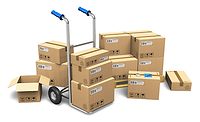Distribution in the Adhesives Market
The role of specialty chemical distributors is expanding in the adhesives market.

Specialty chemical distributors have long played an important part in the distribution industry, and they touch virtually every market segment. While historically serving as suppliers of products and resources for numerous applications, distributors have recently begun to take on the role of technical advisor or product consultant. A strong relationship with a trusted distributor gives a company a variety of products from which to choose for developing applications, technical expertise from the suppliers themselves, and product knowledge to support research and sales.
Automotive
Both engineered plastics and resinous composites continue to displace various metals in automotive production to aid in weight reduction. Adhesives are increasingly used to replace metal parts themselves, as well as traditional metal fasteners where the bonding of dissimilar substrates presents a challenge.
Adhesives in the automotive industry play a role in everything from the structural bonding of the drive shaft/chassis to the bonding of the dashboard and trim, and the potting and sealing of electronics. Distributors have long worked closely with the technical staffs of finished goods manufacturers that cater to the automakers-from Tier I down-to keep up with this innovation.
Construction
Similar to the automotive industry, weight reduction, sound/vibration dampening, and the elimination of metal fasteners are the key performance drivers in formulations designed for chemical anchor, tile mortar and grout, and other general construction adhesive applications (e.g., fastening of sub-floor, foam board, paneling, deck components, etc.). Distributors keep up with industry trends and research the latest information on new products to help planners and builders make informed decisions about the materials they need to get the job done.
Consumer
As the DIY market continues to expand, so does the role of adhesives. Consumers look for the best products they can find for their home improvement projects and hobbies. In this segment, dominant buying motives include ease of use, product safety and cost. When working with the manufacturers of these specialized adhesives, distributors can help determine the products that will best meet market needs while providing the flexibility to seamlessly adapt to specific requirements.
Structural
Structural adhesives are defined as those used in the market segments of transportation, packaging, rigid bonding (e.g., furniture, appliances) and non-rigid binding (e.g., shoe soles, bookbinding). Such a widespread category calls for a vast range of product types and chemistries. Because so many adhesive manufacturers participate across more than one of these market segments, distributors must offer multiple product solutions to meet such varied applications.

For instance, thermoset adhesives-largely either epoxy or polyurethane-generally comprise a polymer, primary and secondary catalysts, and various additives. Many distributors that are active in both the automotive and construction adhesive markets understand these chemistries. Subsequently, they often promote and sell epoxy resin, amine-based curing agents, polyols, aromatic isocyanates, secondary catalysts, and a variety of additives (e.g., rheological modifiers, adhesion promoters, metal powders/oxides).
Many adhesive manufacturers also find synergies across their end-use customer segments in producing both PSAs and HMAs. Although some of the chemistries overlap, such as tackifying hydrocarbon resins and antioxidants, the base resins can vary to include ethylene vinyl acetate (EVA), styrene-isoprene-styrene (SIS), styrene-butadiene rubber (SBR), and straight acrylic. Distributors understand the nuances of these formulations and are able to promote products such as waxes, diluents, processing oils, and plasticizers alongside the base resins in an effort to round out the batch card across a wide range of chemistries.
The variety that a distributor brings to the table is a valuable asset to both the distributor’s customer and the suppliers that are represented. By providing a large selection of product offerings, a distributor can ensure that a customer’s formulation can be tested and reviewed, and tested again until the best solution for the specific application is reached.
In addition to their own technical competence, distributors can help facilitate technical support from the suppliers as needed to assist customers in selecting the right products. In today’s world, where freight rates remain volatile, adhesive manufacturers can keep costs down and more consistent by bundling orders of products from different suppliers together for shipment.
For additional information, contact Palmer Holland, Inc. at 24950 Country Club Blvd., Suite 400, North Olmsted, OH 44070; phone (440) 686-2300; fax (440) 686-2180; email marketing@palmerholland.com; or visit www.palmerholland.com.

Specialty chemical distributors have long played an important part in the distribution industry, and they touch virtually every market segment. While historically serving as suppliers of products and resources for numerous applications, distributors have recently begun to take on the role of technical advisor or product consultant. A strong relationship with a trusted distributor gives a company a variety of products from which to choose for developing applications, technical expertise from the suppliers themselves, and product knowledge to support research and sales.
Market Support
To fully understand where distribution impacts the various industries, let’s take a look at the different market segments, the relevant chemistries woven throughout these segments, and how distribution makes the process easier.Automotive
Both engineered plastics and resinous composites continue to displace various metals in automotive production to aid in weight reduction. Adhesives are increasingly used to replace metal parts themselves, as well as traditional metal fasteners where the bonding of dissimilar substrates presents a challenge.
Adhesives in the automotive industry play a role in everything from the structural bonding of the drive shaft/chassis to the bonding of the dashboard and trim, and the potting and sealing of electronics. Distributors have long worked closely with the technical staffs of finished goods manufacturers that cater to the automakers-from Tier I down-to keep up with this innovation.
Construction
Similar to the automotive industry, weight reduction, sound/vibration dampening, and the elimination of metal fasteners are the key performance drivers in formulations designed for chemical anchor, tile mortar and grout, and other general construction adhesive applications (e.g., fastening of sub-floor, foam board, paneling, deck components, etc.). Distributors keep up with industry trends and research the latest information on new products to help planners and builders make informed decisions about the materials they need to get the job done.
Consumer
As the DIY market continues to expand, so does the role of adhesives. Consumers look for the best products they can find for their home improvement projects and hobbies. In this segment, dominant buying motives include ease of use, product safety and cost. When working with the manufacturers of these specialized adhesives, distributors can help determine the products that will best meet market needs while providing the flexibility to seamlessly adapt to specific requirements.
Structural
Structural adhesives are defined as those used in the market segments of transportation, packaging, rigid bonding (e.g., furniture, appliances) and non-rigid binding (e.g., shoe soles, bookbinding). Such a widespread category calls for a vast range of product types and chemistries. Because so many adhesive manufacturers participate across more than one of these market segments, distributors must offer multiple product solutions to meet such varied applications.

Adhesive Types
Adhesives fall within four types: thermoset, waterborne (dispersion), pressure sensitive (PSA) and hot melt (HMA, non-PSA). Like adhesive manufacturers themselves, these four types have applicability across one or more of the aforementioned markets. Consequently, the technical and purchasing staffs of many manufacturers enjoy the ability to work with a single distributor for all of their production needs (vs. multiple manufacturers of specialty chemical raw materials).For instance, thermoset adhesives-largely either epoxy or polyurethane-generally comprise a polymer, primary and secondary catalysts, and various additives. Many distributors that are active in both the automotive and construction adhesive markets understand these chemistries. Subsequently, they often promote and sell epoxy resin, amine-based curing agents, polyols, aromatic isocyanates, secondary catalysts, and a variety of additives (e.g., rheological modifiers, adhesion promoters, metal powders/oxides).
Many adhesive manufacturers also find synergies across their end-use customer segments in producing both PSAs and HMAs. Although some of the chemistries overlap, such as tackifying hydrocarbon resins and antioxidants, the base resins can vary to include ethylene vinyl acetate (EVA), styrene-isoprene-styrene (SIS), styrene-butadiene rubber (SBR), and straight acrylic. Distributors understand the nuances of these formulations and are able to promote products such as waxes, diluents, processing oils, and plasticizers alongside the base resins in an effort to round out the batch card across a wide range of chemistries.
The variety that a distributor brings to the table is a valuable asset to both the distributor’s customer and the suppliers that are represented. By providing a large selection of product offerings, a distributor can ensure that a customer’s formulation can be tested and reviewed, and tested again until the best solution for the specific application is reached.
Advantages of Distribution
The advantages of distribution in the adhesives industry are many, especially for smaller manufacturers. Distribution allows both the supplier and the customer to maintain lower inventory levels, which reduces unnecessary warehouse space. Instead of approaching several raw material manufacturers for the items they need, customers can choose from a distributor’s breadth of products across a variety of suppliers. This system enables the customer to develop customized solutions for their applications.In addition to their own technical competence, distributors can help facilitate technical support from the suppliers as needed to assist customers in selecting the right products. In today’s world, where freight rates remain volatile, adhesive manufacturers can keep costs down and more consistent by bundling orders of products from different suppliers together for shipment.
Looking to the Future
As the adhesives market continues to consolidate across all stages of the supply chain, most notably among the chemical raw material (i.e., suppliers) and finished adhesive manufacturers (i.e., customers), the role of distribution will continue to gain importance. Past drivers such as weight reduction will remain an important focus among adhesive manufacturers, while challenges such as new substrates and a consistent green chemistry movement will present opportunities for all manufacturers. Distribution will continue to serve as the vehicle to identify and understand future needs across a wide cut of adhesive manufacturers, and subsequently help raw material manufacturers develop, launch, promote, and sell new chemistries to best meet these needs.For additional information, contact Palmer Holland, Inc. at 24950 Country Club Blvd., Suite 400, North Olmsted, OH 44070; phone (440) 686-2300; fax (440) 686-2180; email marketing@palmerholland.com; or visit www.palmerholland.com.
Links
Looking for a reprint of this article?
From high-res PDFs to custom plaques, order your copy today!




.jpg?height=200&t=1676317799&width=200)
